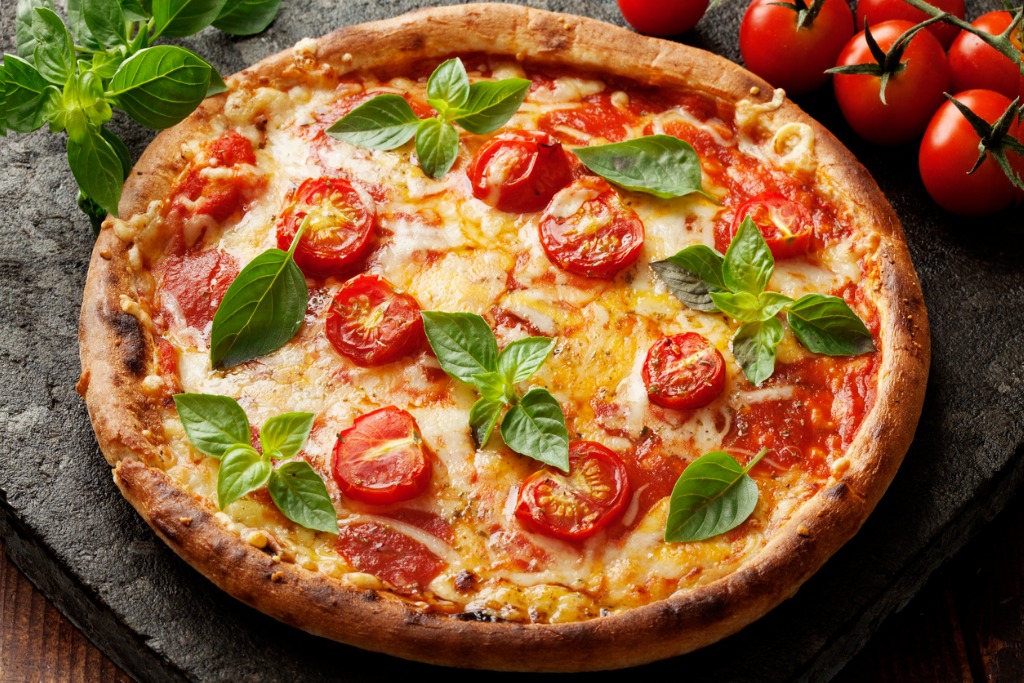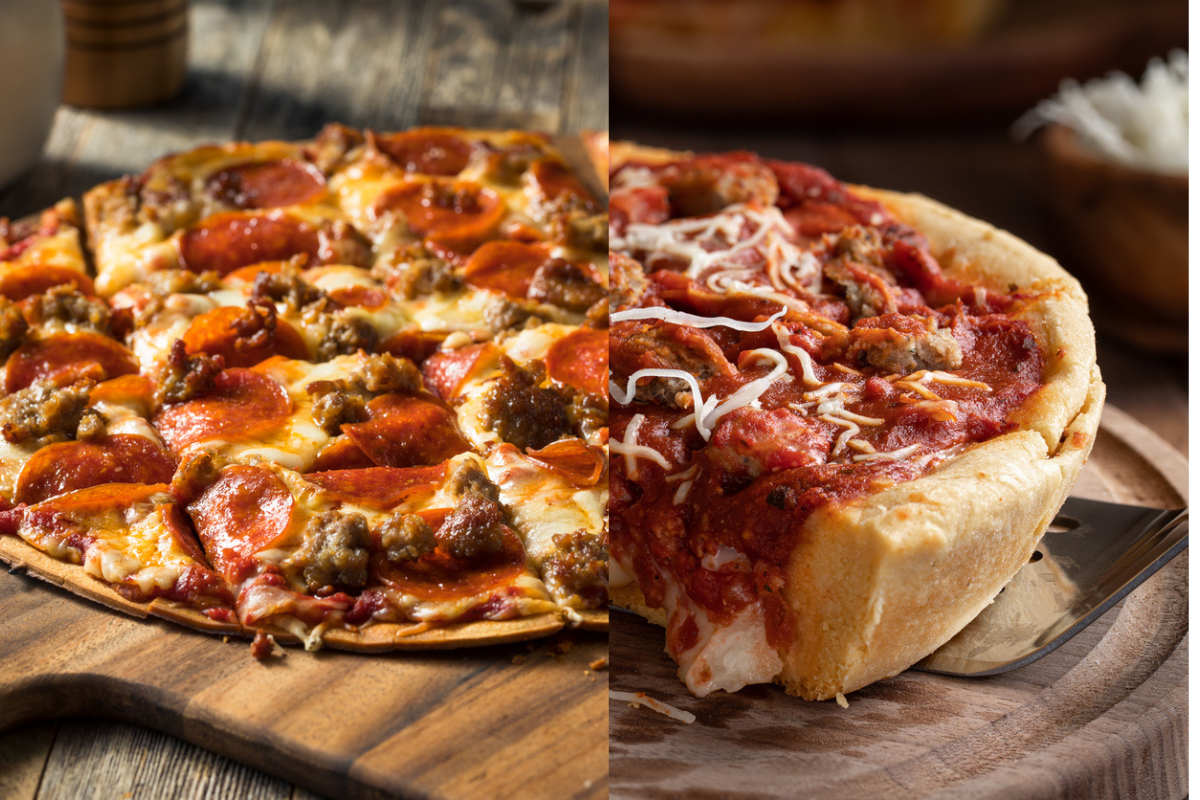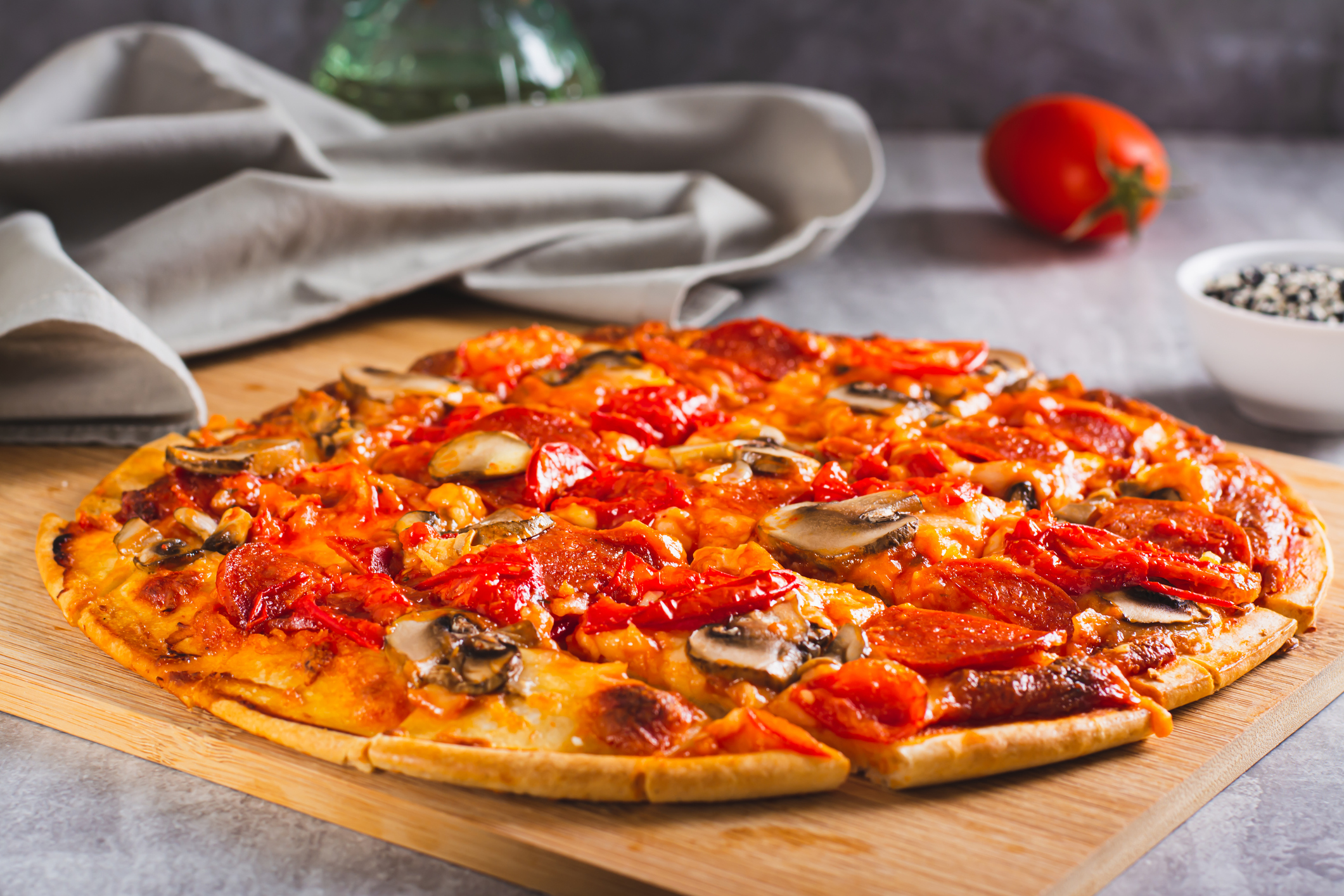History of Pizza: A Delicious Journey

Over three billion pizzas are sold in the United States each year, which roughly equates to 46 slices per person. That is a TON of pizza. Way more than a ton in fact. Thank goodness people love pizza so darn much or else we would be out of a job! We can’t even imagine a world where pizza doesn’t exist.
Come to think of it… where did pizza come from? How long has it been around? Who created it? Why is it so good?! Let’s find out, shall we? Today, we’re taking a dive into the history of the world’s favorite food: pizza! Get ready for one delicious history lesson.
The First Sightings of Pizza Throughout History
Traditional flatbread is often considered to be the progenitor of the pizza we know and love today. This may come as a surprise, but this ancient flatbread actually originated in Egypt, not Italy, in approximately 14000 B.C.E.
Citizens of ancient Rome and Greece also enjoyed these ancient flatbreads covered in toppings. The Greeks, in particular, typically ate a version covered in herbs and olive oil that is not unlike modern focaccia.
 However, you would be correct in assuming that pizza, as we know it, was born in Italy. Specifically, it originated in southwestern Italy’s Campania region in the city of Naples in the late 18th century. Unfortunately, back in the day, pizza was not looked upon with as lustful of an eye as it is today.
However, you would be correct in assuming that pizza, as we know it, was born in Italy. Specifically, it originated in southwestern Italy’s Campania region in the city of Naples in the late 18th century. Unfortunately, back in the day, pizza was not looked upon with as lustful of an eye as it is today.
Quite the opposite, in fact. The upper class of Naples and visitors to the Italian city generally regarded pizza as disgusting and even insulting (*gasp*).
You see, at the time, Naples was extremely overpopulated. Thanks to the Bourbon kings, trade, and large numbers of peasants, the population of Naples grew from 200,000 in 1700 to nearly 400,000 in less than fifty years.
The impoverished members of this population were referred to as the lazzaroni, and experts estimate this group of people numbered close to 50,000. You math whizzes (or calculator-users) out there will realize that nearly 13% of the population was horribly poor.
These people were filthy and often forced to live outdoors or in one-room homes. The lazzaroni, having to scramble from job to job to make ends meet, had to rely on incredibly cheap food to stop themselves from starving.
This is where pizza comes in. Pizza was the food of choice for the lazzaroni. It was cheap and easy to find and eat on the go. The original form of pizza was not sold in shops but by street vendors. Just two sous could afford a pizza large enough to feed an entire family.
Thus, people viewed pizza as the food of the poor. People were disgusted by the herds of lazzaroni, particularly their filthy appearances and poor eating habits. However, this “food of the poor” eventually received a stamp of approval from somebody who was, well… let’s just say, somewhat important.
Pizza Finally Receives its Due Reward
We would argue that the consensus view of pizza is that it is extremely tasty. However, that was not always the case.
Despite the lazzaroni’s gradually improving status and the establishment of actual pizza restaurants in Naples, pizza itself was still generally scorned by the majority of the population. Even the first cookbooks, published in the late 19th century, completely ignored the lazzaroni delicacy.
Fortunately for us, that all changed with the unification of Italy in the mid-to-late 1800s. While visiting Naples in 1889, King Umberto I and Queen Margherita grew exhausted with the exceptionally fancy meals they were accustomed to eating. They wanted to try something local.
 Thus, pizza maker Raffaele Esposito was summoned to prepare some local dishes for the king and queen of Italy. He hastily prepared three kinds of pizza.
Thus, pizza maker Raffaele Esposito was summoned to prepare some local dishes for the king and queen of Italy. He hastily prepared three kinds of pizza.
One was topped with lard, caciocavallo (a kind of stretched-curd cheese), and basil. Another was topped with cecenielli (whitebait). The last pizza was topped with tomatoes, mozzarella, and basil. Coincidentally (or not, depending on whom you ask), the coloration of the third pie matched the color scheme of the Italian flag.
Queen Margherita enjoyed these pizzas so much, especially the third one, that the chef christened the tomato, mozzarella, and basil pie pizza margherita in her honor.
From that moment onward, pizza’s status transformed from a quick snack for the poor to a dish that could be enjoyed by the most royal of families. The love of pizza spread throughout the rest of Italy like a wildfire, with restaurants all across the country beginning to offer pizza as an option, cementing pizza as one of Italy’s signature foods.
Westward Expansion
Despite pizza’s newfound status and tourists’ love for the Italian dish, pizza was far from the worldwide phenomenon that it is today. In actuality, the global success of pizza owes nearly as much to the United States as it does to Italy. In the late 1800s and early 1900s, Italian immigrants had begun to populate America’s east coast.
During that time, Italian Americans established several pizzerias, including Lombardi’s (the very first pizzeria, opened in 1905 in New York City), Papa’s Tomato Pies, Patsy’s Pizzeria, and Totonno’s Pizzeria. All of these pizzerias are still enjoyed by Americans today, and some even have several locations.
However, the establishment of these initial pizzerias did not cause the explosive popularity of pizza. That would not begin until the mid-1940s. You see, in the late 1930s and mid-1940s, there was this big thing called World War II.
We’re not going to dive terribly deep into the politics of WWII, but for this story, all you need to know is that there were two major powers: the Axis Powers and the Allied Powers. The Axis Powers consisted of Germany, Italy, and Japan, and the Allied Powers consisted of Great Britain, the Soviet Union, and the United States.
So, what on earth does this have to do with pizza? Well, when Allied soldiers invaded Italy in 1943, they became, quite frankly, obsessed with pizza!
When American soldiers returned to the United States after the conclusion of WWII, they brought their love of pizza with them. This massive global conflict not only jumpstarted the American economy; it jumpstarted the pizza craze, too!
Pizza, Pizza, Pizza, Pizza
Pizzerias began popping up all over the country and were no longer relegated to Italian-American pizza shops on the east coast. This lead to the creation of several distinct types of pizza, including Chicago-style deep-dish pizza, Detroit-style pizza, and (of course) St. Louis-style pizza.
In the 1950s, rapid technological and economic development in the United States led to the widespread use of the refrigerator and the freezer. As American incomes became more disposable, the domestication of pizza began.
 There was an increased demand for inexpensive and convenient food easily stored in people’s new appliances. This demand led to the creation of frozen pizzas. The development of frozen pizza led to some pretty significant changes to the more traditional pizzas that people had grown accustomed to in the US.
There was an increased demand for inexpensive and convenient food easily stored in people’s new appliances. This demand led to the creation of frozen pizzas. The development of frozen pizza led to some pretty significant changes to the more traditional pizzas that people had grown accustomed to in the US.
Smoother versions of tomato sauce replaced generous chunks of tomato, and new cheeses more susceptible to freezing replaced the old ones.
The establishment of Dominik’s, which was eventually renamed Domino’s, in 1960 popularized pizza deliveries. Thus, the commercialization of pizza began. Their reputation for quick pizza deliveries prompted them to take the company nationwide.
Other pizza restaurants established around this time, like Pizza Hut (1958) and Little Caesars (1959), are still among the most popular pizza chains in the world today. Papa John’s Pizza was established in 1984, and in 2006, Dogtown Pizza opened its doors, revolutionizing frozen pizza forever!
Today, Americans eat 350 slices of pizza per second, 93% of Americans eat pizza at least once every month, and approximately 250 million pounds of pepperoni are consumed by Americans each year. Dogtown Pizza is happy to contribute to these growing numbers!





We are going to cook your pizza on the Green Egg. Do you have any suggestions?
Also do you thaw the pizza before cooking?
First of all nice choice of grill…coolest grill ever. A pizza stone is not required on the grill – we’ve tried with and without with success…but it could save on some cleaning if you get some drips. As with oven cooking, make sure the crust is browned, cheese bubbly. You can place a frozen pizza right in the heat – grill or oven. We have tried thawing to various degrees and haven’t found any reason to recommend thawing first. We DO recommend removing the plastic wrap first – it makes a mess and makes the pizza taste like our competition! 🙂
DTP on the Grill – Enjoy!!!